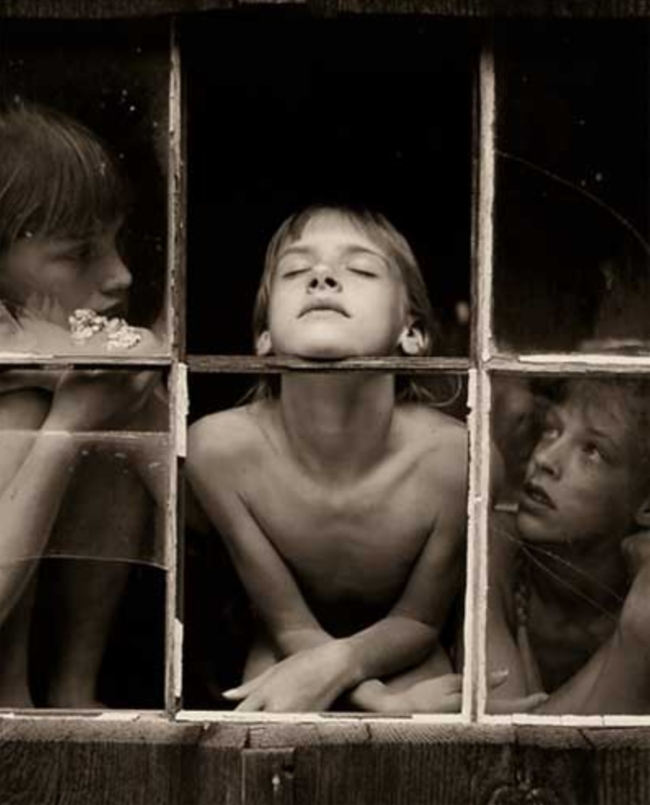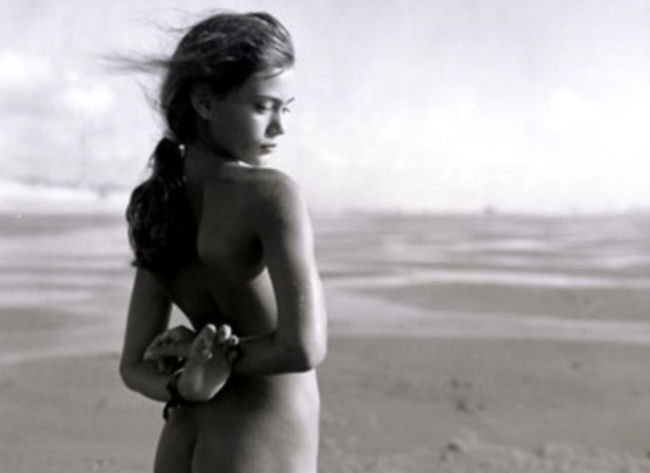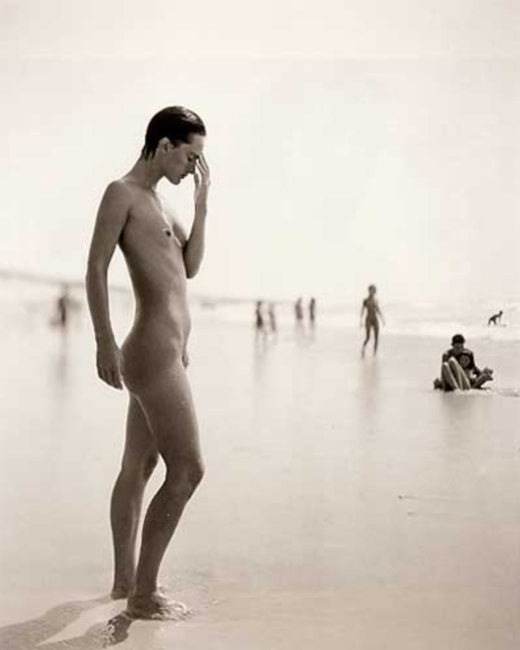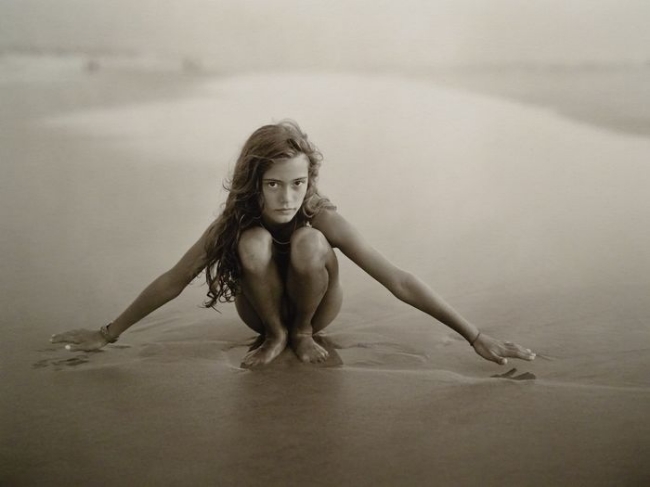The name of Jock Sturges will always be interlinked with accusations of child pornography. It’s impossible to discuss his photographic career without making mention of the 1990 FBI raid on his studio and the resulting criminal charge of child pornography, or without the 1998 child pornography indictments in Alabama and Tennessee against Barnes & Noble bookstores for selling copies of the photography books of Jock Sturges. Although the cases against Sturges were all eventually dismissed, they cost him over US$100,000 in legal fees–and by giving him so much publicity, they earned him millions of dollars in sales.

Sturges was born in New York in 1947. He served four years (1966 to 1970) in the US Navy as a Russian linguist. Following his military service, Sturges earned a BFA in Photography from Marlboro College and an MFA from the San Francisco Art Institute.
Jock Sturges makes portraits, primarily of adolescents and their families. His subjects are generally nude. It seems he finds his subjects at nudist or naturist venues, either in California or Vendays-Montalivet on the coast of France. He has been photographing some of his subjects for more than twenty-five years.
There is nothing ‘candid’ about his portraiture; the subjects are always aware of Sturges and is 8×10 view camera. Yet his subjects are so relaxed and comfortable with him–and with themselves–that the photographs have a simple, casual quality. They’re an odd combination of formality and informality.

The accusations of child pornography grow out of the fact that many of his subjects are both young and nude. His focus on adolescents is, he says, a product of a deep fascination with the concept of change.
“I’ve always been drawn to and fascinated by physical, sexual and psychological change.”
Adolescence is a sort of awkward tipping point, balanced between the absolute innocence of childhood and the coming of adulthood. It’s a very temporary period, a period of rapid physical change, a period in which the individual is increasingly aware of those physical changes.
Sturges often emphasizes the transient quality of the human body by photographing his subjects in the late afternoon and early evening, a time of visible change from day to night, when the sun makes long shadows. The work is aided by the fact that he poses his subjects in timeless environments–broad expanses of beach with the vast ocean in the background, or undomesticated woodlands.
This all contributes to a sort of nostalgic ambience in his work, a sort of sweet sadness that accentuates the vulnerability of the nude figure.

Although the subject of the photographs shock some audiences, photographers are just as shocked by the way Jock Sturges handles the images. He doesn’t have his subjects sign release forms; instead, he gives them absolute control over how the photo is used. Sturges says,
“When I want to use a photograph, I contact each person, explain the context in which I wish to exhibit or publish the picture, and get permission for that specific purpose.”
On occasion, his subjects have withdrawn their approval.
“I’ve had a number of American adolescents who, when they hit high school, said, ‘I really don’t want to see these pictures published right now,’ and they were immediately pulled. I took them out of the galleries.”
That policy is only made possible by the fact that Sturges maintains contact with his subjects. As noted earlier, he has been returning to the same nudist/naturist communities and photographing some of the same subjects for a quarter of a century.
Although Sturges has passionately defended himself against the accusations of child pornography, he says he found himself approaching his photography differently. Before, he photographed his subjects as they naturally behaved. As naturists used to being unclothed, they were utterly unselfconscious about how they stood or sat or bent over. After the indictments, Sturges’ wife noticed he began to give his subjects instructions, telling them to cross their legs, or turn a certain direction in order to avoid an angle that somebody might find suggestive. After the accusations, Sturges said he felt shame had been introduced to his work. Sturges has said he’s having to relearn to be as comfortable with nudity as his subjects.
There is a lyrical beauty to the images created by Sturges, a pristine delicacy that is deeply appealing. It’s especially apparent in his photos of adolescents. They have a natural sense of drama and theatricality, a growing awareness of themselves as individuals, and they try on poses and attitudes as easily as they might try on a hat.

The fact that he photographs nude adolescents will, I suspect, always offend some people and be a cause for concern. The offense, in my opinion, is misplaced; nudity is natural and any prurient appeal in nude studies lies largely in the mind of the viewer. The concern, however, is appropriate; there are photographers who will undoubtedly take advantage of such circumstances.
It’s good that Jock Sturges is making art. It’s also good that the public is keeping an eye out for the vulnerable. Any balance between the two–art and concern–will always be uneasy.
